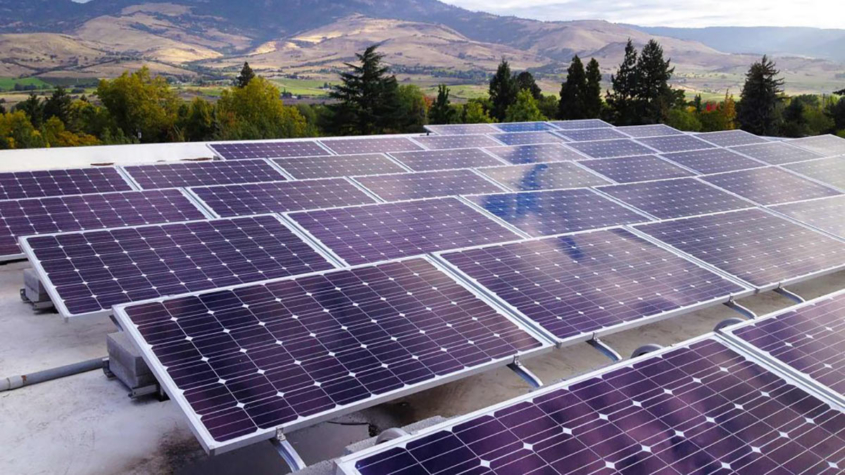SOU receives solar support from Congress
(Ashland, Ore.) — Southern Oregon University will receive $2 million to support its transition to solar power and energy independence, a result of the federal appropriations bill hammered out through months of negotiations and approved by Congress last week.
U.S. Sens. Ron Wyden and Jeff Merkley of Oregon included the solar project in the spending bill at the request of SOU President Rick Bailey. The allocation will be used to partially fund the university’s multi-year solar transition.
“The entire Southern Oregon University community is grateful for the support of the federal government as we begin our effort to become the nation’s first public university to produce all of its own daytime electricity on its campus,” President Bailey said. “We especially appreciate the support and work of Senators Wyden and Merkley for prioritizing our sustainable energy conversion in this year’s federal spending bill.
“This allocation will allow us to take a substantial step toward our goal, and it reinforces our institution’s commitment to environmental stewardship, financial prudence and responsible leadership,” he said. “We look forward to beginning our next round of solar installations to further reduce both our dependence on the electrical grid and the day-to-day costs of powering a 21st century campus.”
The federal funding comes just two months after SOU received a $1 million grant from the Oregon Department of Energy to pay for most of a $1.34 million project to add solar arrays to The Hawk Dining Commons and the Lithia Motors Pavilion/Student Recreation Center complex. That project also includes the installation of battery storage at The Hawk to support students, first responders and the broader community, if needed.
The new federal allocation will help pay for additional solar arrays on SOU’s parking lots and rooftops. Producing all of its own electricity will save SOU at least $700,000 per year in utility costs, and President Bailey plans to expand the program from there – additional solar installations will eventually enable the university to generate income by selling electricity to local utilities. He achieved a similar but smaller solar project at Northern New Mexico College, where he served as president before joining SOU.
SOU will continue to implement energy conservation and energy efficiency measures as it increases its solar capacity.
The university currently has nine solar arrays on its Ashland campus, plus an array at the Higher Education Center in Medford and a pole-mounted array installed last year by a nonprofit on land leased from SOU. The two new arrays supported by the state grant will increase SOU’s solar capacity, and the federal funding will push the project forward even further.
SOU’s first solar array – a 6 kilowatt project with 24 solar panels – was installed on the rooftop of Hannon Library in 2000. A total of five new arrays have been added in just the past three years, in projects funded through a combination of private investors, grants, the student body and the university. SOU’s Hawk Dining Commons and McLoughlin Residence Hall each have solar hot water systems installed to augment their natural gas domestic water heating, and the campus also has three net-zero buildings – they create as much or more energy than they use.
The transition to solar energy is one of four entrepreneurial opportunities SOU is pursuing to create more of its own revenue. The university has also begun a project to demolish the long-vacant Cascade housing complex and replace it with a senior living facility that produces partnerships between its residents and the university. Funding for the demolition has been approved by the state and is expected to begin in the next few months.
Other projects that will produce revenue or reduce expenses for SOU include the establishment of a University Business District in southeast Ashland – discussions are underway with the local business community – and replacement of its operational software with the cutting-edge Workday platform, which eventually will save the university about $750,000 per year in recurring costs.
The projects are part of an effort to realign SOU’s financial structure, reducing expenses to better reflect current enrollment and academic interests, fight the national trend of skyrocketing tuition, expand revenue sources and position the university for strategic growth.
-SOU-



